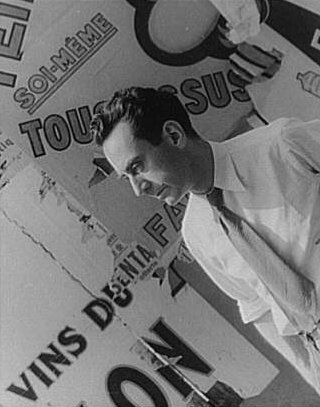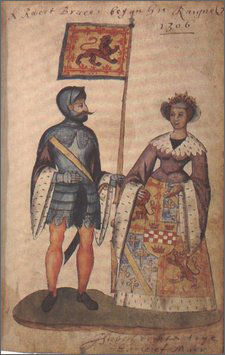I should point out that when Martin Van Buren (above) was humiliatingly dumped into an Indiana hog wallow, ruining a very expensive pair of pearl gray trousers and coating his elegant frock coat with everything a happy swine leaves behind in a porcine sauna, it wasn't entirely fair. Of course “The Red Fox of Kinderhook” was far too crafty a politician to admit he had been humiliated. That would just draw more attention to his humiliation. As the venomous Virginia politician John Randolph observed, Martin Van Buren always “rowed with muffled oars.” But everybody knew this traffic accident had been staged as payback for Van Buren having insulted Hoosiers. What goes around comes around. And it was useless to point out that the insult had mostly come from Van Buren's predecessor, the still popular Andrew Jackson.
Even the frail shadow of federal authority which existed in 1828 was too much for incoming President Andrew Jackson. Over his two terms, he did his very best to weaken the Federal government, in all its endeavors except the ones he approved of. The ideology that argues against "big government" is still powerful in American politics today. Jackson vetoed a new charter for the National Bank - precursor of the Federal Reserve - which left the entire banking system unregulated. He streamlined the sale of public lands, which energized the speculators and overcharge yeoman farmers. He cut entire programs out of the Federal budget, and insisted the states take over many others. And at the same time he backed the Seminole Indian nation into a war.
But it was not until three months after Van Buren's inauguration in March of 1837 that these pigeons came home to roost. The massive real estate bubble suddenly popped. Over half of the nation's unregulated banks suddenly failed. And by January of 1838 half a million Americans were unemployed. Or to put it more simply, suddenly it was prom night and Martin Van Buren was Carrie. And like Carrie, Van Buren then made things worse by slashing out at everything in sight. Oh, he continued the unending expensive Seminole war. But he insisted on killing Federal funding for the National Road, which had reduced mail time between Washington and Indianapolis from several months to less than a week. Van Buren was so doctrinaire he even sold off the construction workers' picks and shovels. And for frontier farmers trying to get their produce to market, that made any economic recovery that much harder.
See, once across the Ohio border, the $7,000 a mile construction costs for the National Road was supposed to be supplied by land sales. But when the real estate bubble popped in 1837, that funding evaporated. Maintenance for the 600 mile road was paid for by the tolls of four to twelve cents (the equivalent of $2.50 today) for each ten mile long section, paid by the 200 wagons, horseback riders, farmers and herds of livestock that used each section of the road every day. But after 1837 that $36,000 a year (almost a million dollars today) had to do double duty, finishing the road and providing maintenance for the road And it was not enough.
Particularly in Indiana, there were long sections beyond the two urban centers, ((Indianapolis and Richmond) where farmers using the road to drive their livestock to market faced forests of 14 inch high tree stumps. These provided clearance for the farmers' and emigrants' high riding Conestoga wagons, but between the stumps, the road bed was in such bad shape that constant repairs to their equipment bankrupted many of the 200 stagecoach lines trying to survive in Indiana. And every frontier farmer and businessman knew exactly who was to blame for all of this –“President Martin Van Ruin”. As a result, in the election of 1840, in Hendricks County, (just southwest of Indianapolis), and along the National Road, Van Buren received 651 votes, while Whig candidate William Henry Harrison received 1,189 votes. Nationwide, Van Buren carried just 7 of the 26 states.
Normally this Hoosier hostility would not have mattered much, but just six months after taking office, the new President Harrison died of a pneumonia, and all previous assumptions had to be rethought . The Whigs had picked John Tyler as Vice President, mostly to get rid of him. Now, disastrously, he was the head of their party. The overjoyed Democrats began referring to Tyler as “His Accidency.” The adroit and dapper Martin Van Buren began thinking he could avenge his defeat and take the road back to the White House in 1844. All he needed was a cunning plan, which he just happened to have.
In February of 1842, Van Buren (above) journeyed to Nashville, Tennessee, for an extended visit with his mentor Andrew Jackson, hoping some of Old Hickory’s popularity would rub off on him. It did not. Heading north, Van Buren then set off for a tour of the frontier states. He was well received in Kentucky, and the pro-slavery areas around Cincinnati, Ohio, but the closer he got to Indiana the more reserved the crowds became.
In early June he was met at the Indiana border by 200 loyal Democrats, and gave them a speech at Sloan's Brick Stage House on Main Street (the National Road) in Richmond, Indiana. But the vast majority of the local Quakers remained skeptical. And while Van Buren was speaking, noted the Richmond Palladium newspaper, “...a mysterious chap partially sawed the underside of the double tree crossbar of the stage...so that it would snap on the first hard pull…”
The next morning the stagecoach and its distinguished passenger headed for Indianapolis, the “Capital in the Woods”. But just two miles outside of Richmond, while bouncing over ruts and stumps, the carriage splashed into a great deep mud hole. And when the horses were whipped to yank the carriage out, the weakened cross brace snapped. Dressed in his silk finery, Martin Van Burn was forced to disembark into the foul waters and wade to shore.
There was no indication of any further sabotage on Van Buren's 74 mile ride across the mostly open prairie, which took the better part of three days. And the ex-President and candidate made it to the Hoosier capital in time to keep his appointments and make his speeches over the weekend of June 9-10. He took two more days to make political contacts, shaking hands and trading confidences, before, on Wednesday, June 13, he boarded yet another mail coach for the 75 mile journey to Illinois. But just six miles down the road, Van Buren had to pass through the Quaker bastion of Plainfield, Indiana.
The town earned its name from the “plain folk” who had laid out the town ten years earlier on the east bank of White Lick Creek. This Henricks county town was straddled by the National Road, which provided Plainfield's livelihood. Less than a quarter mile up Main Street from the ford over the "crick", amidst a stand of Elms, the Quakers had built a camp ground and a meeting house. And here, that Wednesday morning, were gathered several hundred Wigs and Quakers, in their “Sunday, go to meeting clothes”, to see the once and maybe future President ride past. The crowd may have even been increased because the driver of this particular leg of the President's journey was a local boy, twenty-something Mason Wright. Soon, the crowd heard the blast of the horn from Mason's lips, warning of the VIP's bouncing approach down the gentle half mile slope toward White Lick Creek.
The disaster occurred abruptly. The coach rushed into view, with Van Buren's arm waving out of the coach's open window, while Teamster Wright whipped the horses to move faster. Faster? Shouldn't he be slowing down to let people get a view of the President? And then, just as carriage came abreast of the center of the campground, the coach was forced to veer to the right to avoid a large "hog waller" mud hole in the very center of the dilapidated National Road. And as if it had been planned, the right front wheel bounced over the hard knuckle of an exposed bare Elm root. The carriage teetered for an instant until the rear wheel clipped the same root. The teetering coach then careened past the point of no return. Mason Wright leaped free while the coach crashed heavily onto its side into the very center of the smelly, sticky, hot black hog waller. Martin Van Buren had been dumped again.
A Springfield Illinois newspaper would note a few days later, “He was always opposed to that road, but we were not aware that the road held a grudge against him!” Wrote a more bitter Wig newspaper, “the only free soil of which Van Buren had knowledge (of) was the dirt he scraped from his person at Plainfield.” The driver and witnesses blamed the Elm (above), which could not defend itself. Van Buren was uninjured, but once again had to extricate himself from his injured coach. After pouring the mud and other unidentified muck from his boots, Van Buren made his way on foot further west along the National Road to Fisher’s Tavern, at what is now 106 E. Main Street. There, Mrs. Fisher helped the President clean up his pants and coat, and wash the mud from his wide brimmed hat.
Back at the campground. the honest Quakers helped to right the stage, re-attach the horses, and carefully and respectfully deliver the coach to Fishers to collect the President. But it is hard to believe that, as Mr. Van Buren splashed across White Lick "crick" many of those Quakers were not smiling with the sly satisfaction of a job well done.
A few days later Teamster Mason Wright was awarded a $5 silk hat, although it was never explicitly stated it was for his skill in staging a stage crash - call it political slapstick. But the tree who's root had provided the fulcrum for the prank would forever more be known as the Van Buren Elm. In 1916 (above) the Daughters of the American Revolution even gave the tree a wooden plaque of its own.
But the hard winter of 1926 brought the Van Buren Elm down, and a local doctor lamented, “The many friends of the old historic tree are loath to have it removed from their midst.”
Van Buren (above) made it safely to Illinois without further accidents. He was met a few miles outside of Springfield by a small delegation of legislators, including the young Abraham Lincoln. But Mr. Van Buren was never elected to public office again. The judgement of Hoosiers stood firm.
The Quakers' Meeting House still stands among the stand of Elms at 256 East Main Street (corner of Vine) in Plainfield. After the original Buchan Elm fell, a replacement was planted, and it received a bronze plaque (above). This inspired a local grade school to be named for the dapper Democrat who stumbled in their town, and a street was named after him as well. But in Plainfield the National Road (now U.S. Route 40), is still called Main Street. That is true of many Midwestern towns bisected by the National Road. It truly was America's Main Street. And Martin Van Buren had been wrong about that.
- 30 -



















































































